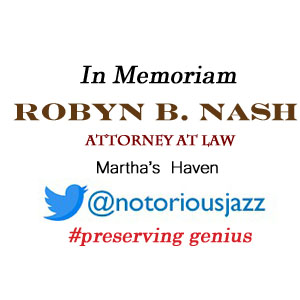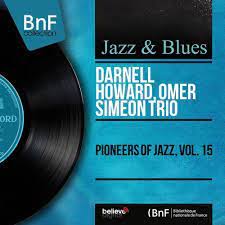
Daily Dose Of Jazz…
Darnell Howard was born on July 25, 1895 in Chicago, Illinois and began playing violin at age seven, picking up clarinet and saxophone later in his youth. He began playing professionally with John H. Wickcliffe’s Ginger Orchestra from 1913 to 1916.
Moving to New York City in 1917, Darnell played and recorded as a violinist with W. C. Handy, then headed back to Chicago, where he led his own band, played with Charlie Elgar before joining James P. Johnson’s Plantation Days Band, which toured London, England in 1923. The following year he toured Europe again as a member of the Singing Syncopators that also played in Shanghai later in the decade.
His Chicago years saw him playing with Carroll Dickerson, King Oliver, and Erskine Tate, Jerome Carrington, Dave Peyton and Earl Hines. He led a quartet in 1928, but his jazz violin is featured on the Hines band’s February, 1933 recording of the Earl Hines/Jimmy Mundy swing composition Cavernism.
In the late 1930s, Howard was freelancing into the Forties and playing with Fletcher Henderson and Coleman Hawkins, and putting together another band in Chicago from 1943 to 1945. He would go on to play with Kid Ory in California for part of 1945, then returned to Chicago and back again in 1948 with Muggsy Spanier until 1953. His only recordings as a leader were done while he worked with Bob Scobey in 1950, amounting to only four sides.
Through the 1950s he played with Jimmy Archey, rejoined Earl Hines to play Dixieland in San Francisco, California and recorded with Don Ewell on his 1956–1957 albums. Sometime after 1962 Darnell suffered a prolonged illness and after recuperating he played with Elmer Snowden, Burt Bales, and his own groups. His final tour in 1966, was in Europe as a member of the New Orleans All-Stars, then he fell ill again. Clarinetist, violinist and alto saxophonist Darnell Howard transitioned on September 2, 1966 in San Francisco.
More Posts: bandleader,clarinet,history,instrumental,jazz,music,saxophone,violin
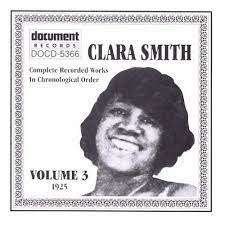
Daily Dose Of Jazz…
Leon Alexander Anthony Abbey was born in Minneapolis, Minnesota on May 7, 1900 to Luther James Robert Abbey and Eva Lee Alexander. He started his career in 1920 as a classical violinist with the orchestra of J. Rosamond Johnson. Five years later, he recorded with Clara Smith on If You Only Knowed and You Better Keep The Home Fires Burning.
By 1926, Leon was leading the Savoy Bearcats and toured with the band the next year in Argentina, Brazil, and Uruguay. For a decade, he toured throughout Europe and performed in India two times.
Abbey led a band with blues singer Ethel Waters. In Chicago, Illinois he led a trio until 1964. His sideman during his career included Fletcher Allen, Emile Christian, Bill Coleman, Peter DuConge, and Crickett Smith. He recorded Jazz and Hot Dance in Denmark as a leader in 1938 on Harmony Records in Copenhagen, Denmark. It was also issued under the name Whoa Babe.
Violinist and bandleader Leon Abbey transitioned in September 1975.
More Posts: bandleader,history,instrumental,jazz,music,violin
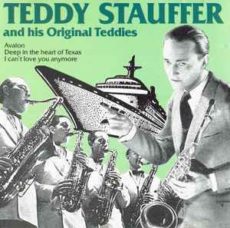
Daily Dose Of Jazz…
Ernst Heinrich “Teddy” Stauffer was born May 2, 1909 In Murten, Fribourg, Switzerland He was dubbed Germany’s “Swing-King” of the 1930s. He formed the band known as the Teddies, which is also billed as the Original Teddies or the International Teddies, which continued after he left in 1941.
Annual trips to the Swiss cities of St. Moritz, Arosa and also a guest appearance in London, England were responsible for the international fame of the Teddies band. Until 1939, he appeared with his Original Teddies-Band especially in Berlin and Hamburg, Germany. He enjoyed his popularity at the 1936 Olympics, had hits with Goody~Goody, and turned Horst Wessel Lied, the National Socialist’s anthem, into a jazz number in 1938. With his jazzy swing music, however, Stauffer increasingly got in trouble with the Reichsmusikkammer, a Nazi institution that promoted “good German music” which was composed by Aryans and seen as consistent with Nazi ideals.
Returning to Switzerland in 1939, he eventually emigrated to the United States and then to Mexico. His reputation as a playboy and a well~known womanizer who was married to Hedy Lamar, did not sway him from also having affairs with Rita Hayworth and Barbara Hutton.
Violinist, saxophonist and bandleader Teddy Stauffer who was also an actor, nightclub owner, and restaurateur transitioned on August 27, 1991 in Acapulco, Mexico at the age of 82.
More Posts: bandleader,club owner,history,hotelier,instrumental,jazz,music,saxophone,violin
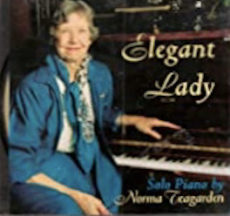
Daily Dose Of Jazz…
Norma Louise Teagarden was born in Vernon, Texas on April 28, 1911 into a musical family that consisted of her mother Helen, who played ragtime piano and taught; her brothers Charlie, a trumpeter, Clois, a drummer, and Jack, a trombonist. She performed with the latter in the 1940s and 1950s.
She performed on piano and violin during the early part of her career, which began in Oklahoma City, Oklahoma. In the 1920s she moved to New Mexico and worked in territory bands, returning to Oklahoma City in the 1930s. After another stint there she moved to California in the 1940s touring with her brother Jack from 1944–1947 and from 1952–1955.
Outside the Teagarden family, Norma worked with Ben Pollack, Matty Matlock, and Ray Bauduc. Eventually settling in San Francisco, California she often performed on solo piano and with bandleader Turk Murphy.
Pianist and violinist Norma Teagarden transitioned on June 6, 1996.
More Posts: bandleader,history,instrumental,jazz,music,piano,violin

Daily Dose Of Jazz…
Han Bennink was born April 17, 1942 in Zaandam, Netherlands, the son of a classical percussionist. He began playing the drums and the clarinet during his teens. He also went on to learn to play the violin, banjo and piano, which feature him on some of his recordings.
Through the 1960s, while in his t,wenties he was the drummer with a number of American musicians visiting the Netherlands, including Dexter Gordon, Wes Montgomery, Sonny Rollins and Eric Dolphy.
He subsequently became a central figure in the emerging European free improvisation scene. In 1963 he formed a quartet with pianist Misha Mengelberg and saxophonist Piet Noordijk which performed at the 1966 Newport Jazz Festival. The following year Han co-founded the Instant Composers Pool with Mengelberg and Willem Breuker, which sponsored Dutch avant garde performances. Late in the decade he played in a trio with saxophonist Peter Brötzmann and Belgian pianist Fred Van Hove, which became a duo after Van Hove’s departure in 1976.
From the late 1980s through the early 2000s, Bennik collaborated closely with Dutch post-punk band The Ex, simultaneously playing through the 1990s in Clusone 3, a trio with saxophonist/clarinetist Michael Moore and cellist Ernst Reijseger.
He has recorded twenty albums as a solo or leader and recorded over a eight dozen albums as a sideman with the likes of Derek Bailey, Conny Bauer, Don Cherry and Alexander von Schlippenbach, Steve Lacy, Lee Konitz, Ray anderson, Gary Bartz, Jckie McLean, Paul Bley, Annette Peacock, Anthony Braxton, Marion Brown, Uri Caine, Myra Melford, and Sonny Rollins. (partial list)
His style is wide-ranging, running from conventional jazz drumming to highly unconventional free improvisation. Drummer Han Bennink is best known as one of the pivotal figures in early European free jazz and free improvisation, and he continues to push forward the envelope of his music at 80.
More Posts: bandleader,banjo,clarinet,drums,history,instrumental,jazz,music,piano,violin




